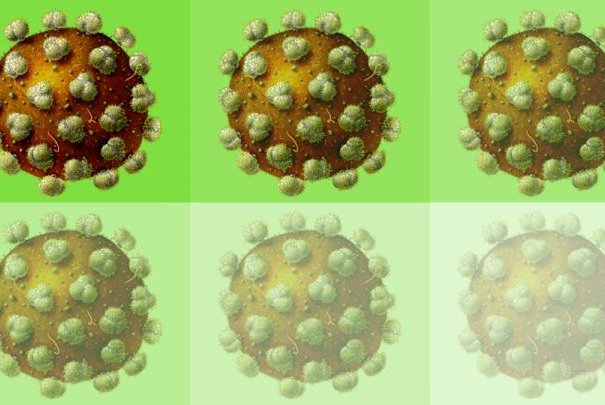Researchers at the University of Nebraska have engineered an on/off switch that could allow for the creation of an HIV vaccine. Photo illustration by Angie Fox/University of Nebraska State Museum
March 29 (UPI) -- Researchers at the University of Nebraska created an on/off switch in a weakened form of HIV to increase its safety for use in a potential vaccine.
There are currently no vaccines for HIV, a virus that has claimed the lives of approximately 35 million people during the past 35 years.
When vaccines are made, scientists prefer to use a weakened form of a virus instead of a deactivated form because weakened forms are stronger and provide longer lasting immunity. However, weakened viruses are still able to replicate and can become full-blown pathogens.
In 2014, the team from the University of Nebraska genetically engineered a version of HIV that requires a synthetic amino acid not found in the body to replicate.
The team replaced a three-nucleotide sequence, or sense codon, in HIV's genetic code. Each codon instructs transfer-RNA to add it's corresponding amino acid to a chain that becomes a protein and allows for viral replication.
Researchers swapped out one of these sense codons for a "nonsense" edition that signals a stop in the amino-acid production, halting production of the proteins needed for replication. The team then engineered a unique tRNA and an accompanying enzyme that can interpret a sense codon.
When tRNA and enzyme were supplied with the synthetic amino acid, the production of proteins continued replicating the virus -- and when the supply of amino acids was stopped, so did replication.
This technique allowed researchers to have control over the replication of HIV. Researchers then embedded their genetic switch inside the HIV genome, so each copy of the virus contained the switch and by delivering a supply of amino acids allowed multiple cycles of replication needed for an effective vaccine.
"Safety is always our biggest concern," Wei Niu, associate professor of chemical and biomolecular engineering at the University of Nebraska, said in a press release. "In this case, [it means] we're one step closer to generating a vaccine."
Earlier studies have been able to generate HIV immunity in organisms by deleting HIV genes to limit replication, with one vaccine protecting 95 percent of rhesus monkeys from the virus. However, the virus was able to overcome this process and replicate unchecked.
The combination of nonsense codon, genetic switch and synthetic amino acid represents an especially stringent set of safeguards to protect against unchecked replication, which could expand its use against several viruses and not just HIV, the researchers said.
The study was published in ACS Synthetic Biology.















